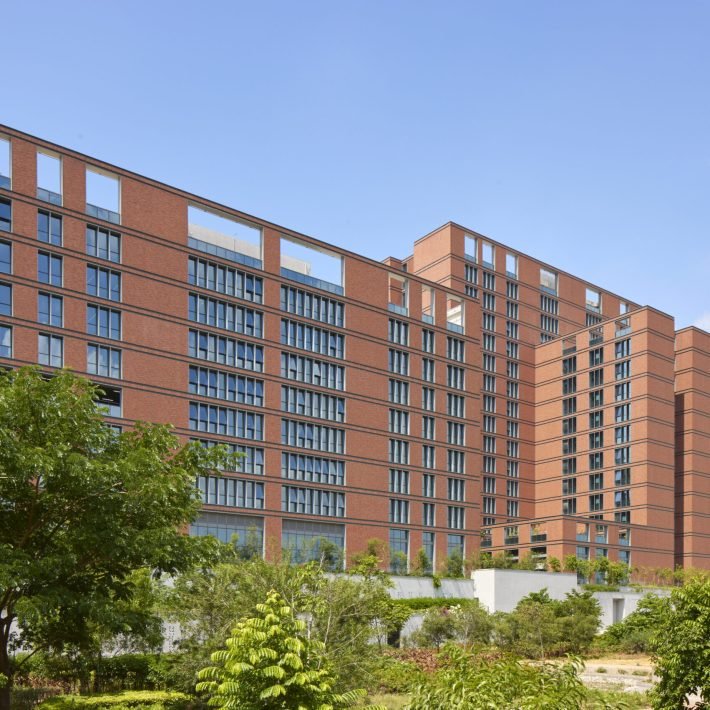Harsh Varshneya, Principal Architect at STHAPATI, discusses the vital role of integrating local art and design in urban architecture, emphasizing its impact on cultural identity, aesthetics, and sustainability.
As India continues to urbanise and its population grows, the design of our neighbourhoods becomes more critical than ever. Rather than defaulting to uninspired concrete blocks and minimalist designs, we must integrate local identity into every space. With traditional craftsmanship and fading artistry, architecture must serve as a canvas for regional design and craftsmanship. This integration must be embedded in the very fabric of our designs—from materiality to conceptualisation and execution.

The Value of Integrating Local Art in Urban Architecture
Urban spaces can serve as catalysts for economic development and community vitality. Well-designed streetscapes, open building buffers, and interactive street edges create micro-economies within neighbourhoods, driving local engagement and fostering a sense of place. Public spaces such as exhibition centres, auditoriums, and designated areas for local fairs (‘melas’) play a crucial role in fostering community cohesion and supporting local economies. In an era dominated by technology and online commerce, these physical spaces serve as vital cultural and economic hubs that define the identity of cities and neighbourhoods across India. These multifunctional spaces provide platforms for local artisans, vendors, and craftsmen to showcase talents and products. They serve as focal points for cultural exchanges and community events, attracting residents and visitors alike to participate in festivities, exhibitions, and performances. By facilitating direct interactions between buyers and sellers, these spaces promote economic growth by supporting local businesses and preserving traditional craftsmanship. Moreover, urban spaces designed for exhibitions and gatherings contribute to the vibrancy, history, culture and character of urban environments when they reflect traditional craftsmanship.

Local art and design reflect a community’s history, culture, and values. Murals depicting local stories, sculptures inspired by the environment, and architectural elements echoing regional traditions contribute to a place’s unique identity. This fosters a sense of belonging and pride among residents, who see their stories woven into the built environment. Additionally, public art projects can act as catalysts for economic development. They attract visitors, generate interest in particular neighbourhoods, and boost property values while providing opportunities for local artists to showcase their work, contributing to the economic life of the community.
Architectural Elements as Canvases for Art –
Columns – Local artists can create murals, mosaics, or intricate carvings that reflect the region’s heritage or motifs – a fluted column adorned with traditional floral patterns or a series of columns showcasing scenes from local folklore.
Beams and Ceilings: Exposed beams can be crafted from locally sourced wood with unique textures or painted with geometric patterns inspired by regional textiles. Ceilings can be transformed into works of art using intricate tilework, woven panels made from natural materials like bamboo, or aluminium with embossed edges to add sheen to the ceiling – reminiscent of grand historic palaces or light installations evoking cultural symbols.
Facades: Traditional bricklaying techniques can create geometric patterns or depict historical figures or scenes. Intricate stone carvings can reflect local mythology, religious iconography, or native flora and fauna, adding depth and cultural significance to the structure. Additionally, decorative metal panels crafted using techniques like filigree or repoussé can highlight the skills of local metalworkers, blending tradition with contemporary design.
Windows and Doors: Windows and doors can be designed to incorporate local artistic elements. Traditional stained glass techniques can depict scenes or geometric patterns. Wooden doors and window frames can be adorned with intricate carvings or painted with vibrant colours used in local festivals.

A Sustainable Cycle
Integrating local art into urban architecture can significantly promote eco-friendly practices, seamlessly aligning with sustainable design principles. When paired with educational initiatives, public art projects help people understand the history and significance of various art forms, fostering a deeper appreciation and connection. Utilising regionally sourced materials, such as local wood, stone, clay bricks, and natural fibres like bamboo or woven reeds, adds authenticity to the design while promoting sustainability. By creating a true sustainability cycle, this integration supports a new generation of talent, equipping them with valuable knowledge and skill sets to sustain and grow these traditions. This approach not only revives artisanal communities but also empowers vulnerable artisans by ensuring their skills and traditions are passed down to future generations. With the construction industry moving towards the adoption of timber in the construction of specialised buildings, the use of bamboo and timber in innovative forms is also seen as a replacement for energy-exhausting materials.

As architects and city planners, we must become patrons of these art forms, creating a cycle where art is not just preserved but reinterpreted and revitalised for the future. By doing so, we can ensure that our urban spaces are aesthetically pleasing, sustainable and deeply connected to our communities’ cultural and social fabric. Through thoughtful integration of local art, we can bridge modernity with cultural heritage, creating environments that resonate with the spirit of place and enhance the quality of life for all.















